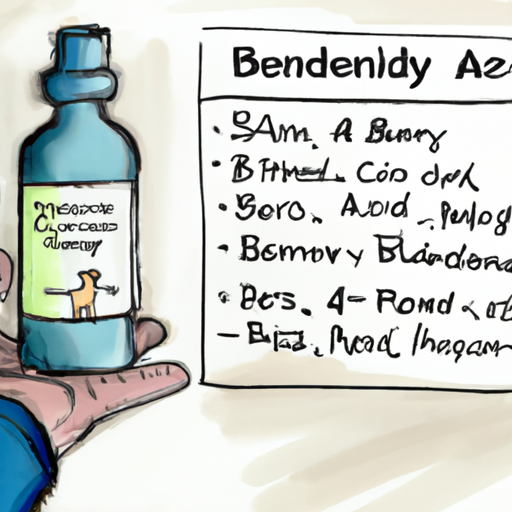As a caregiver, you always want the best for your beloved pet. It’s crucial to know how to handle situations that require immediate attention. Administering medication like Benadryl, for instance, is one such example that requires knowledge and precision, especially when it comes to dosage.
What is Benadryl and Why is it Used for Dogs?
Benadryl, also known by its generic name Diphenhydramine, is an over-the-counter antihistamine commonly used for relieving allergies in humans. However, it can also be used for dogs for similar purposes and more.
- Allergies: Benadryl can help ease symptoms such as itching, hives, or swelling due to insect bites or stings.
- Anxiety: Some dogs may experience anxiety during thunderstorms, fireworks, or car rides. Benadryl can have a mild sedative effect, helping to calm them.
- Motion sickness: If your dog gets car sick, Benadryl might be a solution.
- Insomnia: In rare cases, vets might suggest Benadryl to help dogs with sleep issues.
Dosage Based on Weight
Determining the correct dosage of Benadryl for your dog primarily depends on their weight. However, it’s always advisable to consult with your vet before administering any medication. Here’s a general guideline:
| Weight of Dog | Recommended Dose of Benadryl |
|---|---|
| Under 10 lbs | Please consult with your vet |
| 10-20 lbs | 10-20 mg |
| 20-30 lbs | 20-30 mg |
| 30-40 lbs | 30-40 mg |
| Over 40 lbs | 1 mg per pound of body weight |
Please note that the typical Benadryl tablet is 25mg, so a 25-pound dog should be given one tablet.
Possible Side Effects
Even though Benadryl is generally safe for dogs, it doesn’t mean it’s free from side effects. Always observe your dog after administering medication and contact your vet if you notice:
- Rapid breathing
- Increased heart rate
- Dry mouth
- Urination difficulties
- Diarrhea or vomiting
When Not to Use Benadryl
Although Benadryl can be beneficial, there are circumstances when it should not be used:
- Pregnant or nursing dogs: Benadryl might affect the health of the puppies.
- Dogs with certain conditions: Dogs with glaucoma, cardiovascular disease, or hyperthyroidism should not take Benadryl.
- Dogs on certain medications: Some medications may interact negatively with Benadryl. Always consult your vet if your dog is on other medications.
Frequently Asked Questions
1. Can I use liquid Benadryl for my dog?
Yes, you can use liquid Benadryl, but it’s crucial to ensure it doesn’t contain alcohol or xylitol, which are harmful to dogs. The dosage is the same as for tablets.
2. How often can I give my dog Benadryl?
Typically, you can give your dog Benadryl every 8 to 12 hours, or 2-3 times a day. However, always follow your vet’s advice.
3. What if my dog has an allergic reaction to Benadryl?
If your dog shows signs of an allergic reaction such as difficulty breathing, swelling, or hives, seek immediate veterinary help.
4. Can I give my puppy Benadryl?
It’s best to consult with your vet before giving a puppy any medication.
By understanding the ins and outs of administering Benadryl to your dog, you can ensure their safety and comfort. Always remember, your vet is your best guide when it comes to your pet’s health.



